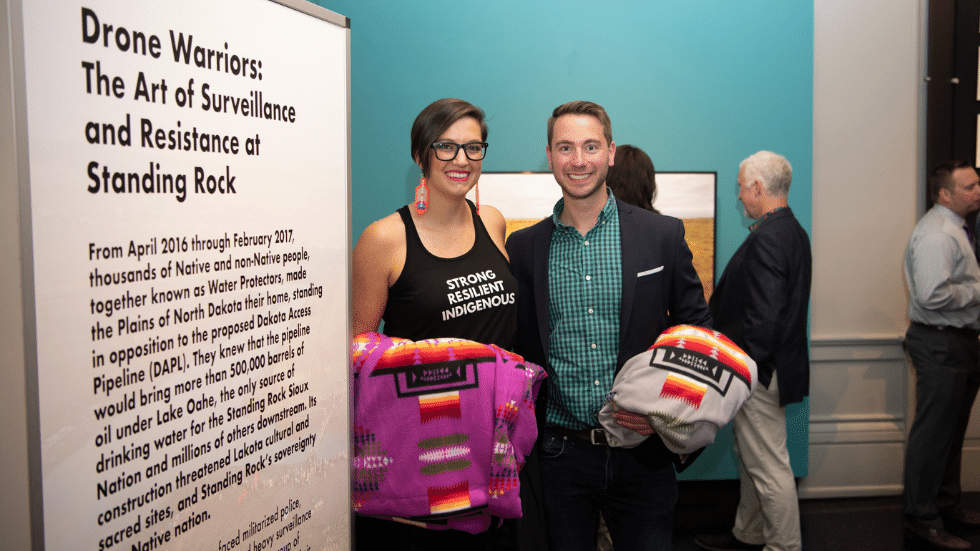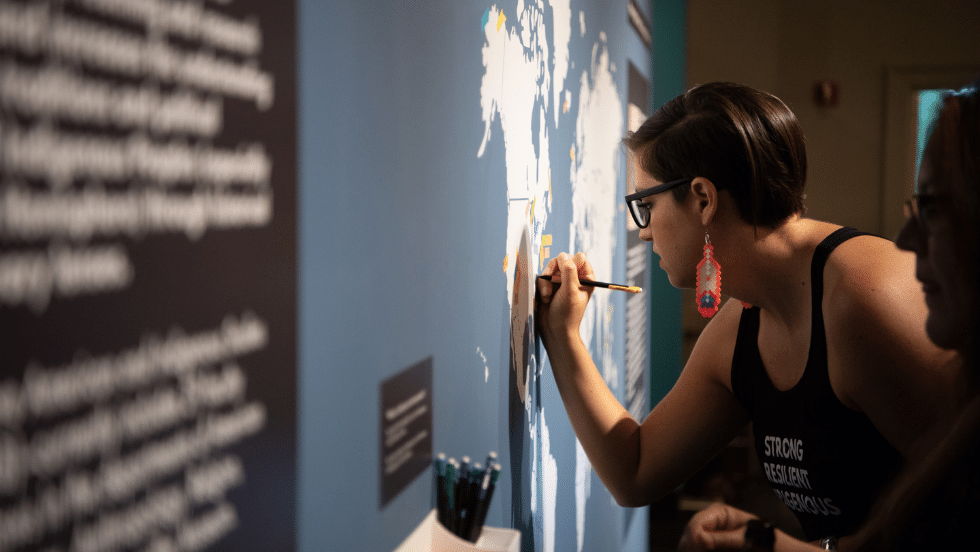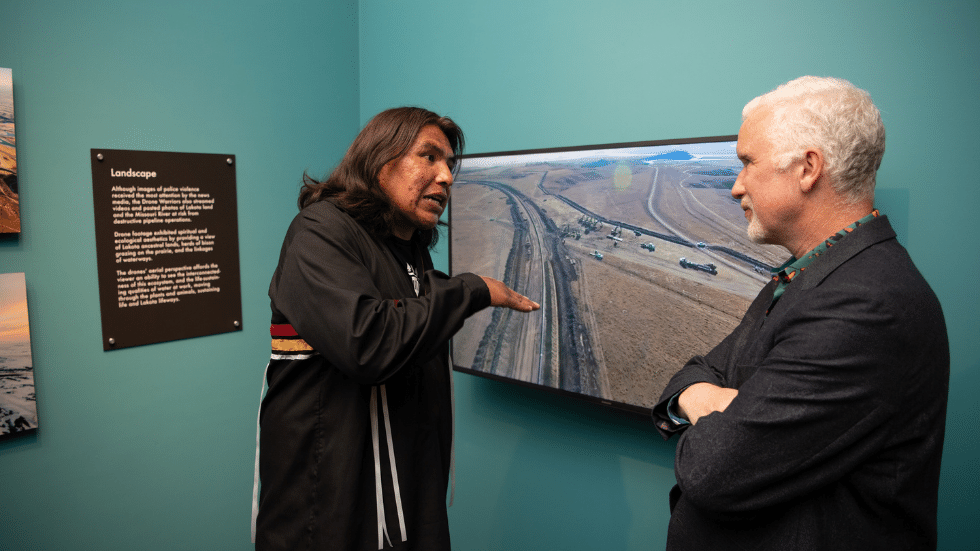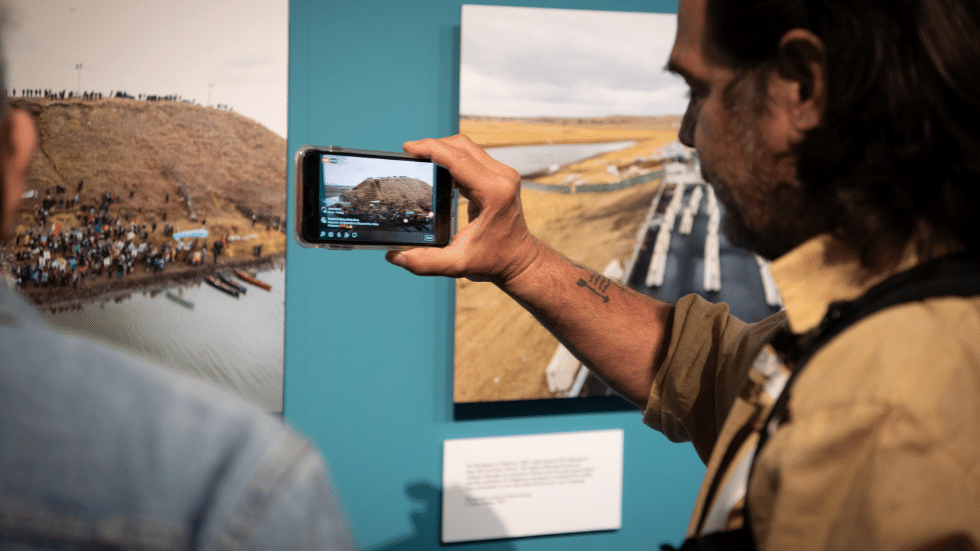From April 2016 through February 2017, thousands of Native and non-Native people, together known as Water Protectors, made the Plains of North Dakota their home, standing in opposition to the proposed Dakota Access Pipeline (DAPL). They knew that the pipeline would bring more than 500,000 barrels of oil under Lake Oahe, the only source of drinking water for the Standing Rock Sioux Nation and millions of others downstream. Its construction threatened Lakota cultural and sacred sites, and Standing Rock’s sovereignty as a Native nation.
As the Water Protectors faced militarized police, National Guard roadblocks, and heavy surveillance from local, state, and federal forces, a group of photographic drone operators emerged within their ranks. These Drone Warriors used technology to document the militarized force and police brutality the Water Protectors faced. By sending their drones up and over barricades, they illuminated spaces hidden from the public, unmasked the face of force, and showed the world the beauty of the landscape that was threatened by construction and potential contamination.
Their images motivated Water Protectors to join the movement in person, through donations, or by spreading the word on Facebook and with hashtags like #NoDAPL. We can view the use of drones by the Drone Warriors as an indigenization of neocolonial military and corporate surveillance technology. However, we also see in these images forms of aesthetic protest in which the beauty of the water, land, and the Movement itself are on full display.
Opened May 11, 2018 - Closed December 6, 2019
Curated by Adrienne Keene, Haffenreffer Museum Faculty Fellow and Assistant Professor of American Studies and Ethnic Studies, and Gregory Hitch, American Studies doctoral student.





